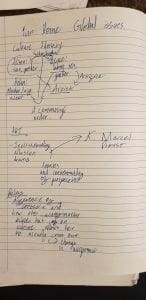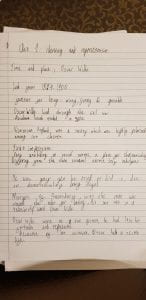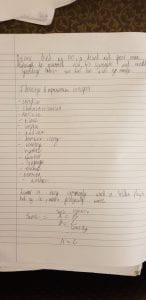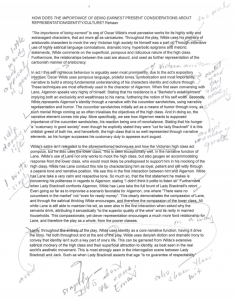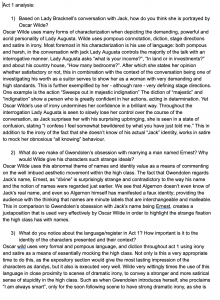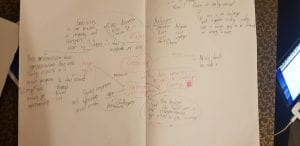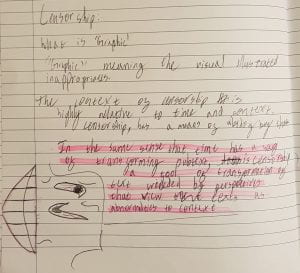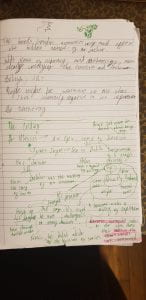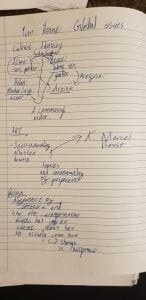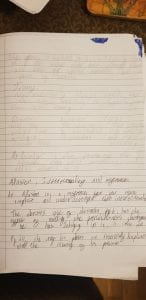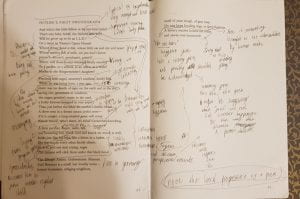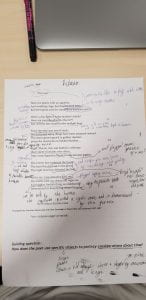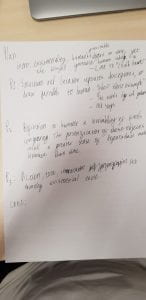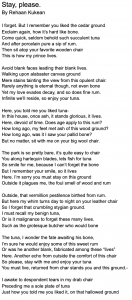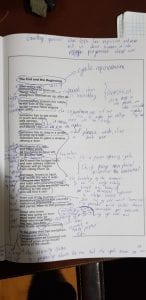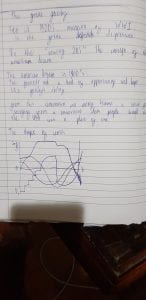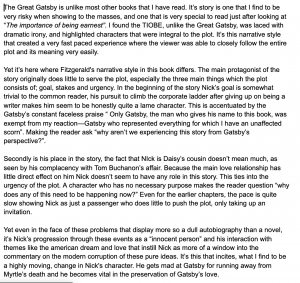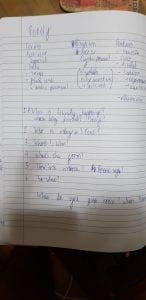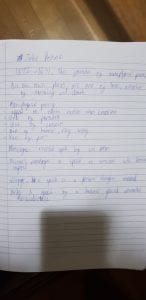A small summary of my understandings of the large global issues that Fun home attempts to tackle or comment on. Although lacking much to be written in detail about without going into every example, its concepts permeate through out the entire comic. Especially in the main characters journey to identity actualisation.
Category Archives: Identity and Representation
Introduction to TIOBE
Below are some of the notes I made on my first learnings of TIOBE. Although much of it is superficial info about the author and his comeuppance. I found it to be extremely vital to build this understanding of context, especially when understanding that TIOBE has heavy commentary about global issues with identity and representation that are very closely related to his own circumstance.
My CAT for TIOBE
Below is a CAT for an analysis on the TIOBE as a whole. But more specifically its commentary on identity and representation. They are annotated and taught me well about how to be concise and effective when essay writing. Although a jarring introduction to IB essay writing, it was an extremely informative experience.
Act 1 analysis of TIOBE
The humour of Fun home
CAT, Absent Friends
Censorship mind map, Fun home
A slight more in depth look at the approach Fun home has at conveying censorship. More specifically, it is my interpretation of the place censorship has in a modern society.
Big understandings on Fun home
Fun home Differences
Hitler’s first photograph
CAT #2 “Museum” intro redo
After the disappointment I experienced from receiving the results of my second CAT, I realised that the source of my failure was the very beginning of my passage. The intro was poorly worded and wasn’t that definitive, it also didn’t go fully into depth on the topic of “so what”. This lead to the rest of my work being without aim, and overall didn’t have a cohesive message. So from this learning, I thought to try redo my intro, with a bit more of an objective that would pave a clear path for the -hypothetical coming paragraphs.
The free verse poem “Museum” by WIslawa Szymborska, is a highly technical piece of literature. It dictates the journey of a woman, most likely Szymborska, walking through a museum and noting the relics of the past that lay before her. Through this poem Szymborska uses a long running metaphor alongside heavy personification of these items, expressing them to have once held these grand human traits: Love, rage and joy. This metonymic personification is used in tandem with a constantly repeating diction and tone to convey the loss of these traits, and therefore the loss of humanity through time. Even though for the majority of the poem, Szymborska conveys a sense of existential dread due to time’s inevitable conquering of humanity, in the last stanza, through her use of a joyish waltz like metre and expressive tone, she celebrates human’s paradoxical ability to blissfully continue struggling.
CAT #2
This is some of my annotations I did in my second CAT. This CAT is based on an unseen poem, and frankly I believe I did really really bad. In the planning stage I didn’t use a lot of the annotations I did to form a coherent structure for my writing. Leading to my writing being sloppy and poorly worded.
Sestina #1
As one of the culminations of our poetry work, one of our tests was us actually having to create a poem. Using a very strict poetic structure, called a sestina. In a sestina, each stanza is 6 lines, except for one being only 3 lines. Also the last words of each stanza is repeated in s specific order.
Below is my stanza. Although I feel like I really liked what I did with it. After seeing it graded, I realised I focused on constructing a narrative much more than thinking how to creatively use poetic techniques. The narrative was supposed to be that of an estranged father, who lost his son. This causes him great guilt, so he starts manifesting his child in his dreams, yet signs of his failure as a father keep peeping through. Such as his fixation on his sparse knowledge of his son, seen through the tuna, and him forgetting the form of his favorite chair. I felt really proud of this narrative, yet I feel like I didn’t adhere to the rubric as much, which asked for more of an advanced approach through technique.
Szymborska
Well into the poetry unit, we have fixated on a very prominent poet: Wislawa Szymborska. A polish poet, whose many works delve into the metaphysical genre our curriculum seems to be gravitating towards. Personally I really like her work so far. Very rarely have I seen a poet who is able to express themselves so thoroughly through poetic techniques. Through this she is able to maintain an extremely captivating brevity in her words, that is really remarkable.
Below is a little bit of annotating I did on one of my favorite poems of hers.
The Great Gatsby
In between the short two week October break we were tasked with having a read of the The Great Gatsby. Although it wasn’t something of great prevalence, I always noted the large distaste towards this book among high schoolers. Thusly never reading it myself. Yet after reading, I really have no idea why it was so largely disliked. Although I do believe the pacing of moments was a bit slow and lackluster at moments, I found the characters to be grounded and at moments the story was quite enthralling.
Below are two small analysis as some written thinking I had done.
Starting Poetry
My first attempt at an IB CAT
In this image below, you’ll see the titular subject at hand. Its topics pertain to the ideas about representation and identity seen in “The importance of being Ernest” The work I did, has some writing around it, that writing being notes my teacher wrote on how I did. Following those notes, is a small statement at the bottom grading my work, and giving some conclusive pointers. Although I was quite disappointed in my performance, I’d like to relegate myself to thinking I only see this as a point of growth.
